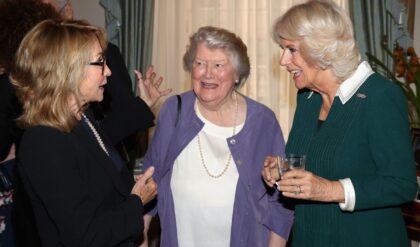BREAKING NEWS: EGYPTIAN MUMMY WITH GOLDEN TONGUE DISCOVERED – A STUNNING NEW CHAPTER IN ANCIENT HISTORY REVEALED
In a discovery that is shaking the world of archaeology, Egyptian authorities have unveiled the finding of an exceptionally rare mummy with a golden tongue, buried deep within an ancient necropolis in northern Egypt. This mysterious and awe-inspiring find is rewriting our understanding of ancient Egyptian rituals, beliefs, and burial practices—and igniting global fascination.
Unearthed in the ancient site of Quesna, located in the Nile Delta, the mummy dates back to the Greco-Roman period, over 2,000 years ago. But it’s what was found inside the mouth that stunned researchers: a golden tongue, meticulously crafted and placed where the real tongue would have been.
“This is not just a decorative element,” says Dr. Mona El-Shazly, an archaeologist with the Egyptian Ministry of Antiquities. “This tongue of gold carries spiritual, symbolic, and possibly political meaning—its implications are profound.”
WHY A GOLDEN TONGUE?
The golden tongue is believed to have been placed to allow the deceased to speak in the afterlife—a belief deeply rooted in ancient Egyptian religion. According to mythology, the dead had to pass through a series of trials in the underworld, including speaking to Osiris, the god of the dead, in order to gain safe passage to the afterlife.
“A golden tongue would have been seen as a divine tool—pure and eternal,” says Dr. Youssef Hamdi, Egyptologist at Cairo University. “It’s both a magical object and a status symbol.”
While similar discoveries have been made in recent years—such as golden tongues found in mummies at Taposiris Magna near Alexandria—this mummy is the best-preserved and most detailed yet, offering new insights into how widespread and elaborate the practice might have been.
INSIDE THE TOMB: A RICH BURIAL SITE OF THE ELITE
The tomb itself was no ordinary resting place. Alongside the golden-tongued mummy, archaeologists uncovered:
-
Gilded funeral masks
-
Amulets in the shape of scarabs and eyes of Horus
-
Mummified animals, including falcons and dogs
-
Shards of painted pottery, some inscribed with names and protective spells
The level of preservation and opulence indicates the individual buried was a high-ranking member of society, possibly a noble, priest, or official who lived during the Ptolemaic period (305–30 BCE), when Egypt was ruled by Greek-descended kings following Alexander the Great’s conquest.
“Every detail—from the linen wrappings to the burial offerings—tells a story of wealth, power, and religious devotion,” said Dr. Hamdi.
THE MYSTERY DEEPENS: A CLUE TO CULTURAL FUSION?
The mummy’s burial style reflects a fascinating fusion of Egyptian and Greek traditions, typical of the Greco-Roman period. Scholars believe the golden tongue may also have been a symbolic response to cultural fears—possibly a way to guarantee one’s voice would not be silenced by foreign rulers or by divine judgment.
Inscriptions in both ancient Greek and Demotic Egyptian found in the tomb further suggest the individual lived during a period of intense cross-cultural exchange. This has led some experts to speculate that the golden tongue may have been a political statement as much as a spiritual one.
WHAT THIS DISCOVERY MEANS FOR HISTORY
This extraordinary find opens a new chapter in our understanding of ancient funerary practices, especially those involving non-traditional burial items. It forces scholars to reassess long-held assumptions about death rituals during a period often overshadowed by earlier dynastic eras.
Moreover, it raises urgent questions:
-
Were golden tongues reserved only for the elite?
-
How many more such burials remain undiscovered?
-
Could there be a lost priesthood or cult that used this ritual as part of a secret rite?
“This is only the beginning,” said Dr. El-Shazly. “What we’ve found may just be one piece of a much larger, hidden tradition.”
CONCLUSION: A MOUTHFUL OF MYSTERY
As the golden-tongued mummy goes on display for further analysis, historians and archaeologists alike are captivated by what it represents: a powerful convergence of art, religion, politics, and mystery. It is a reminder that even after thousands of years, the sands of Egypt still conceal secrets that can astonish the modern world.
The voice of the past is speaking again—this time, in gold.





